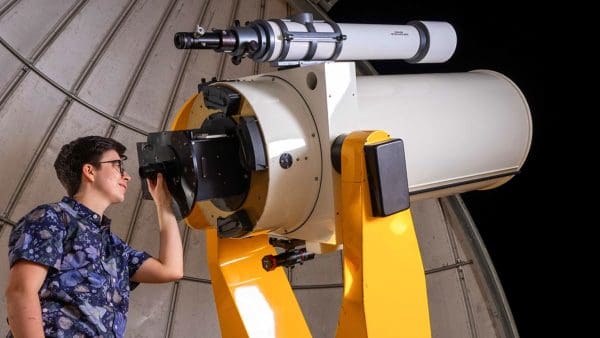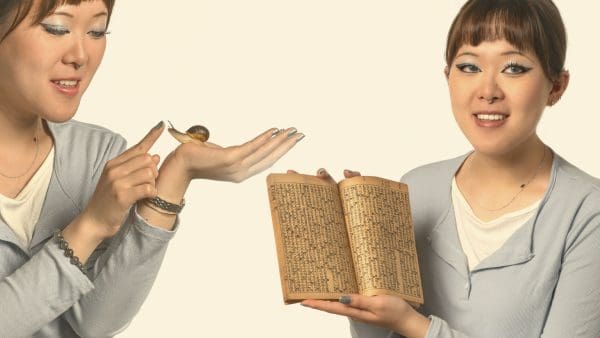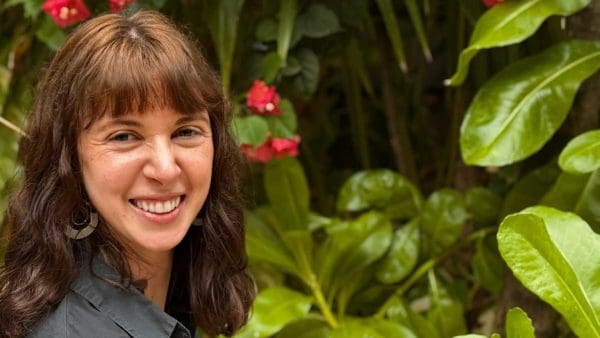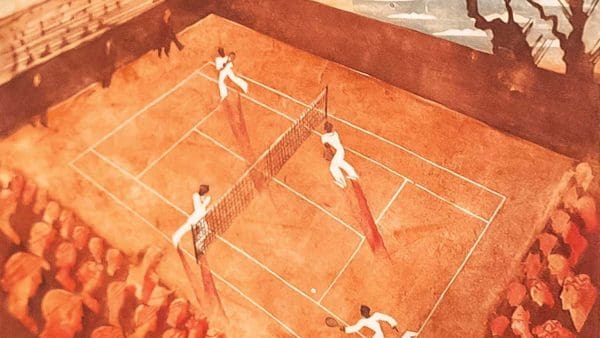
The social met the spatial in Alex Murray’s recent study, which could hold out promise for children with autism.
Will Kirk / homewoodphoto.jhu.edu
Could children with autism improve their social skills by also improving their ability to discern spatial relationships? That’s what Alex Murray ’12, working with Amy Shelton, associate professor in the Department of Psychological and Brain Sciences, hopes to find out.
In fact, Murray’s initial research using Hopkins student volunteers did show a “significant” correlation between the two apparently unrelated skill sets.
“It was surprising and definitely not what we were expecting,” says Murray, who says she has been reading books about neuroscience disorders since the fifth grade. “But it was exciting because we know that [how people discern a point of view] is something you can train and get better at, so it could possibly have a reciprocal effect—a person could improve their social skills by improving their ability to perceive spatial relationships.”
Murray first tested her subjects to determine their level of social development through an autism quotient test, approximately 50 questions that help scientists measure the extent of autistic traits in adults by the range of their responses to various scenarios (i.e. “I find myself drawn more strongly to people than things.”) Then she constructed buildings out of plastic Lego blocks, stood them on a table, and placed either an artist’s modeling doll or a simple wooden block to mark different viewpoints of the buildings.
When she asked her subjects to identity photographs taken from the different viewpoints of the Lego buildings—either from the perspective of the doll or from the block—she found that those who scored better on the social skills test had an easier time identifying the perspective from the doll’s point of view than those who didn’t score as well on the test. Murray believes that’s because the doll, in its role as a “social agent,” made the less socially well-adjusted participants feel uncomfortable. Both groups scored similarly when trying to identify points of view from the block.
Murray, whose findings with principal investigator Shelton were published in the Journal of Experimental Psychology, hopes to start testing children next and then engage kids with autistic spectrum disorders to see if the correlation holds up. If it does, Murray says she’d like to set up a training study to see how teaching spatial relationships could improve social skills. “Since we found a correlation between the two, we think there could be some residual effects—if you train a person to improve on one [perspective taking], they could improve on the other [social skills].”
For now, the neuroscience major hopes to pursue a dual MD-PhD degree and continue the work she’s started as a Wilson Fellow. “The fact that I found a correlation in my preliminary data that had never been found before was an amazing thing,” she says. “We’ll see what happens from here.”




